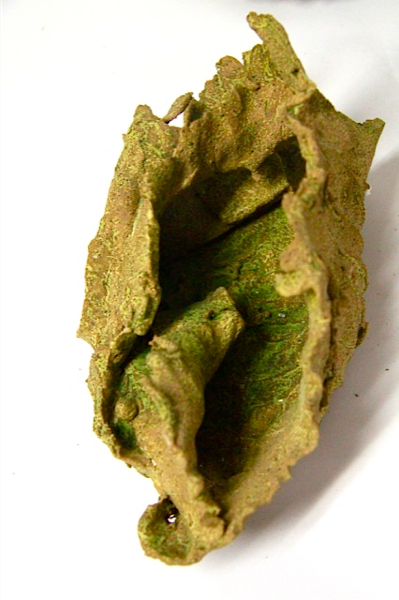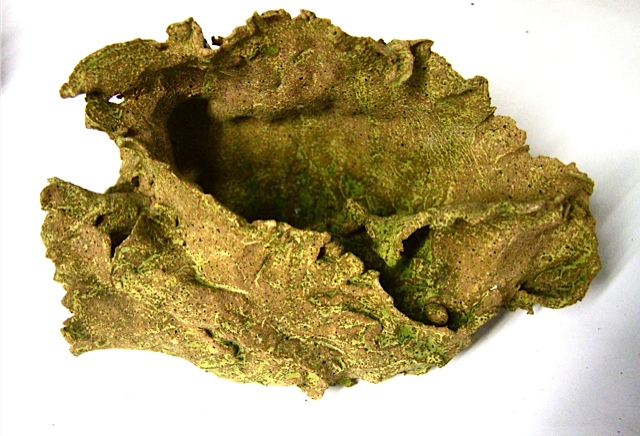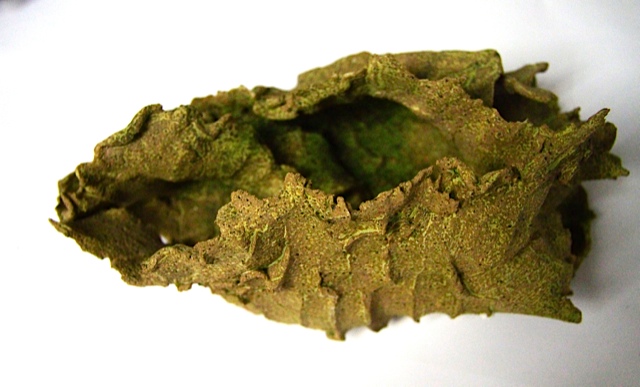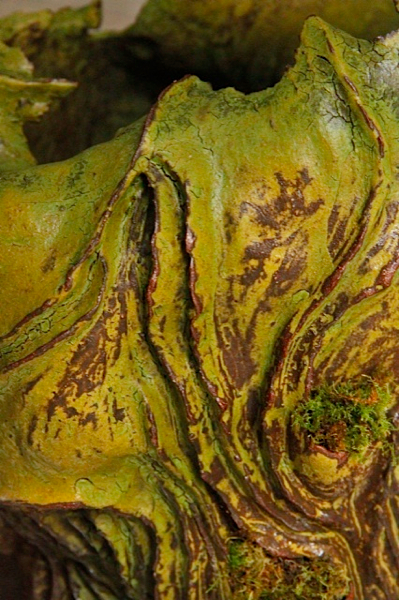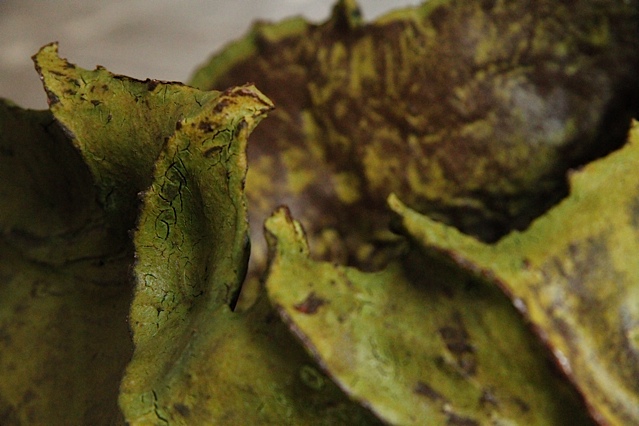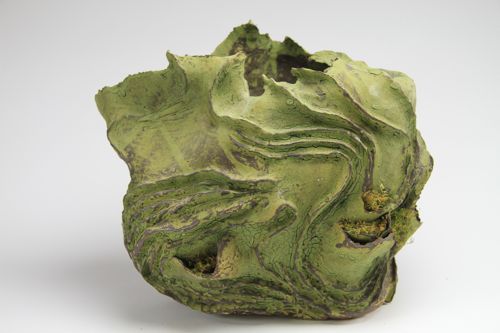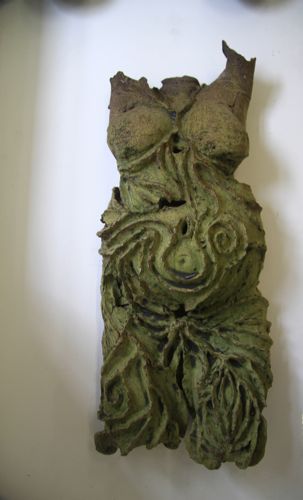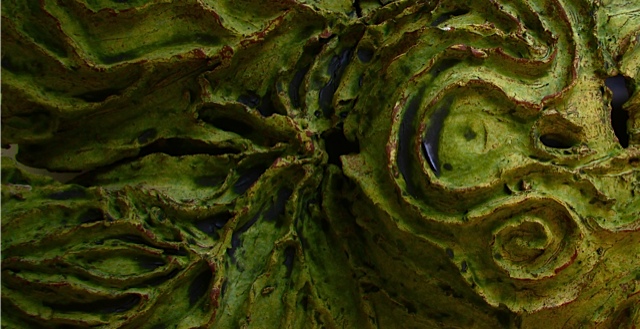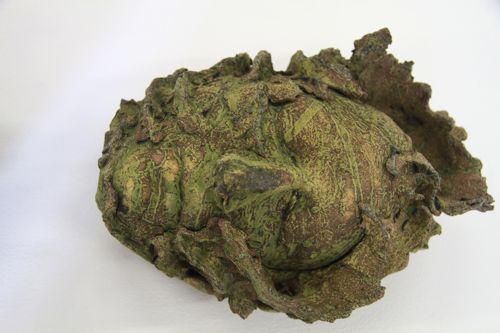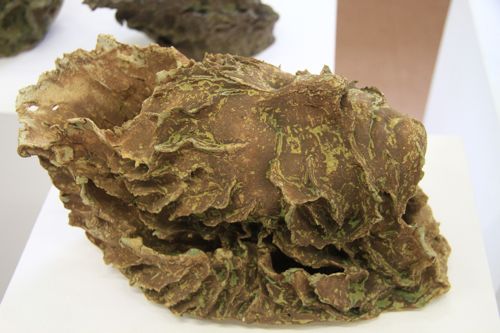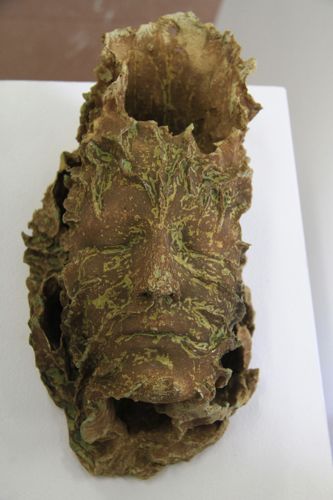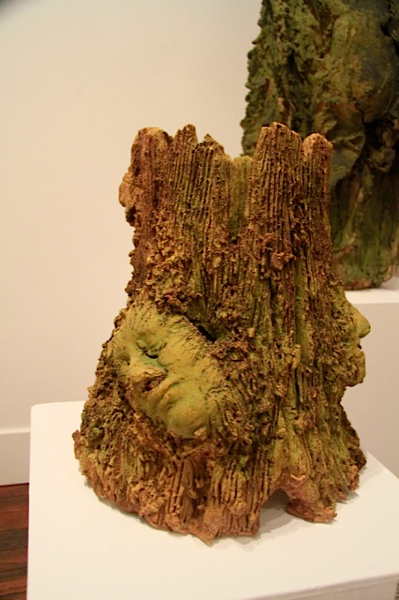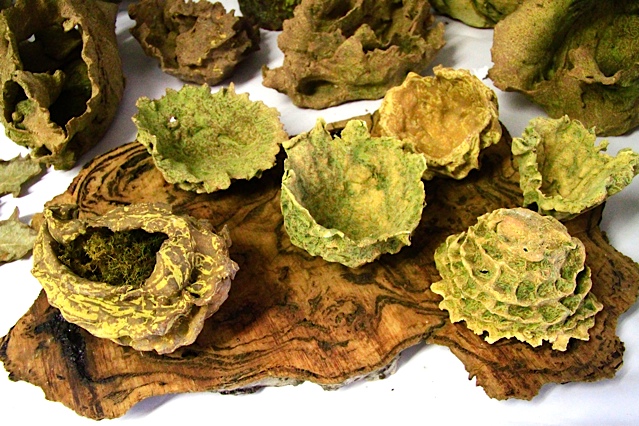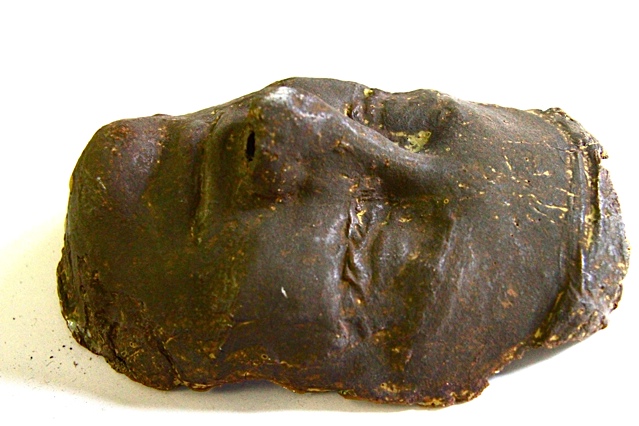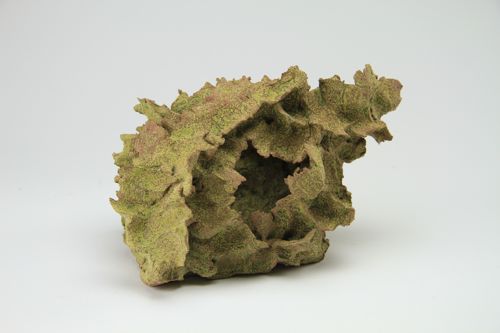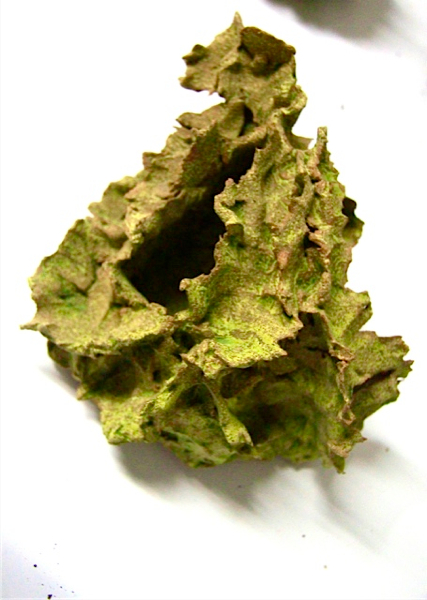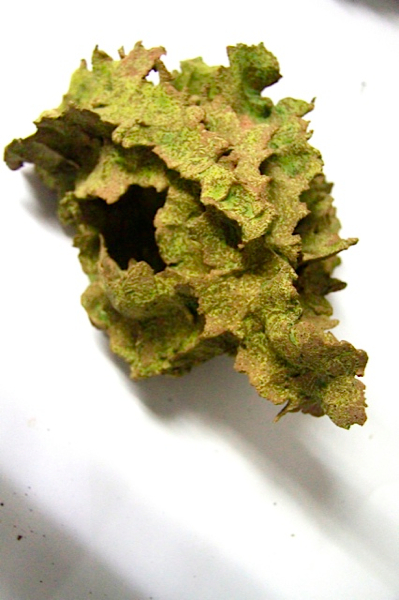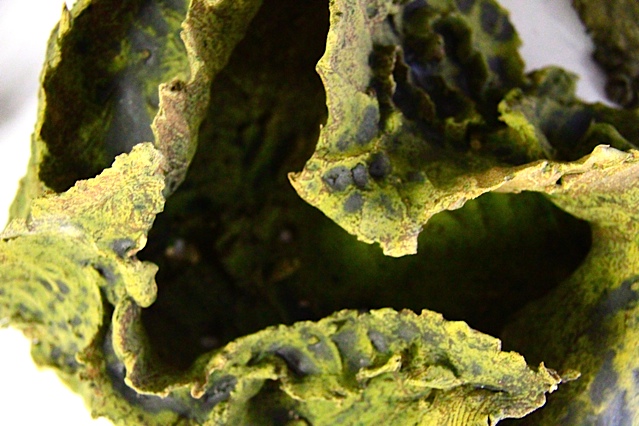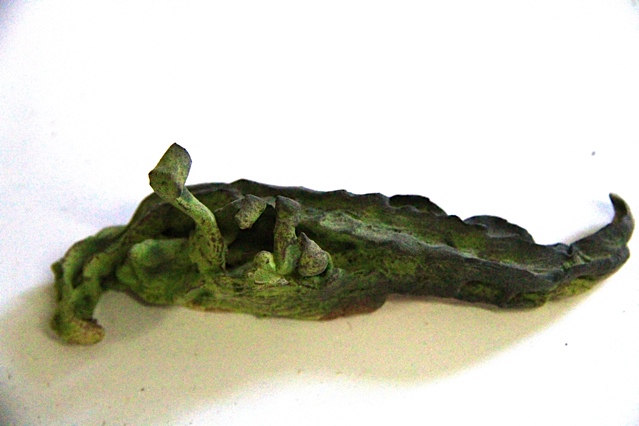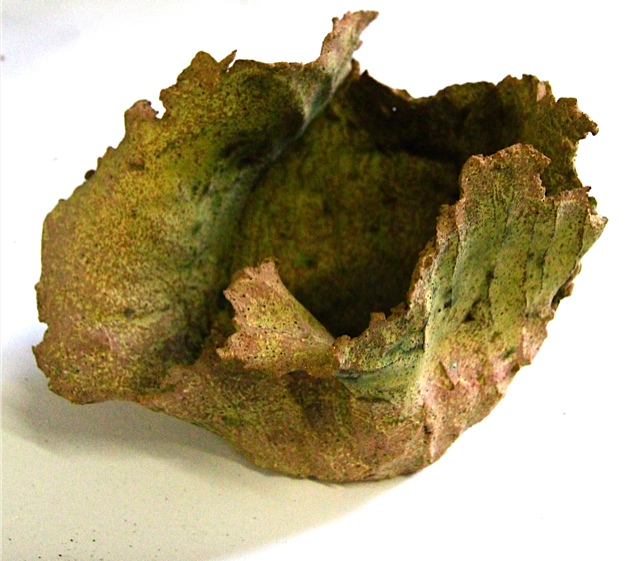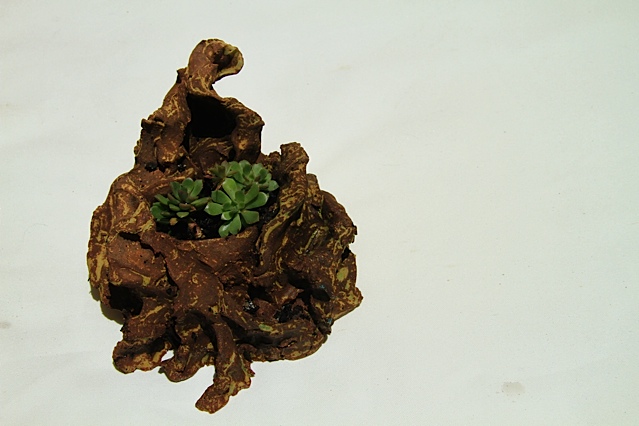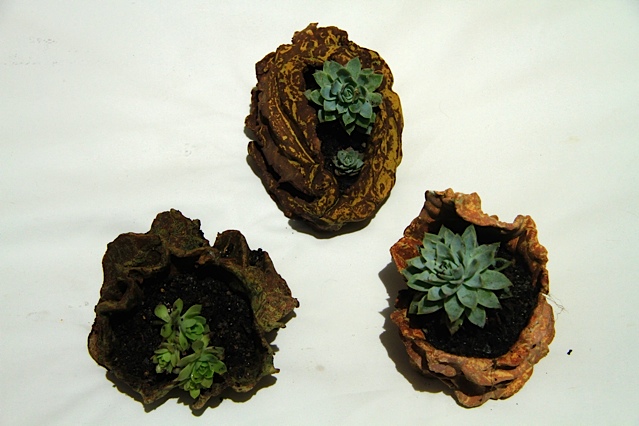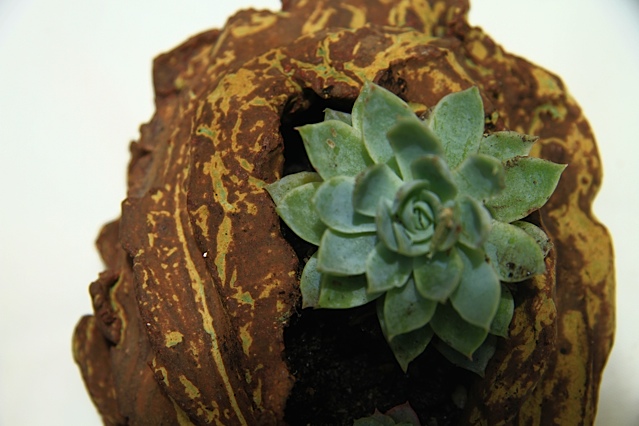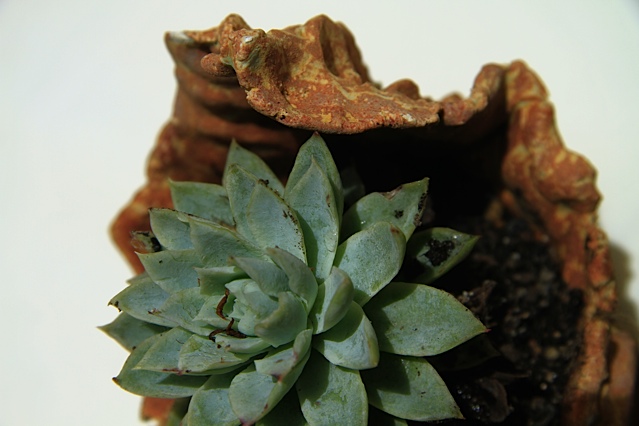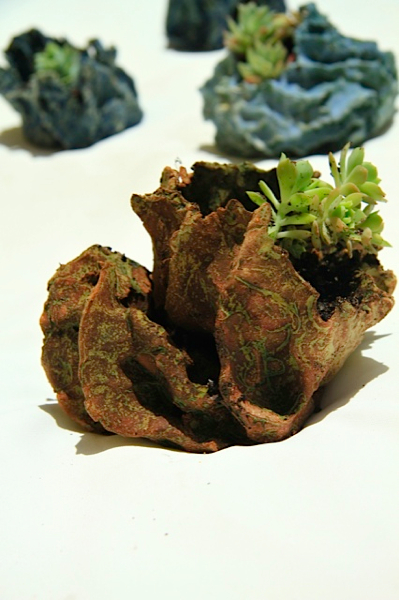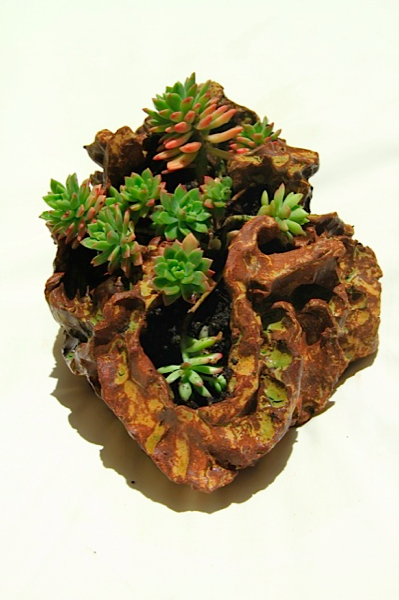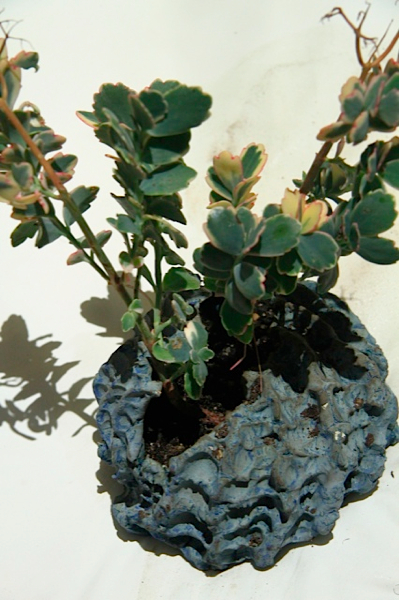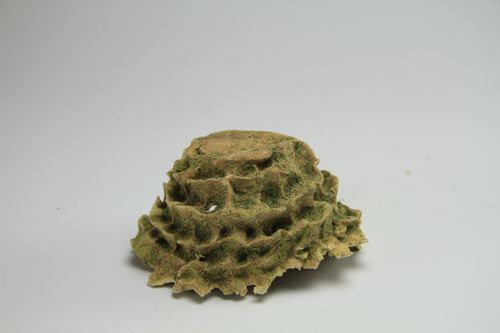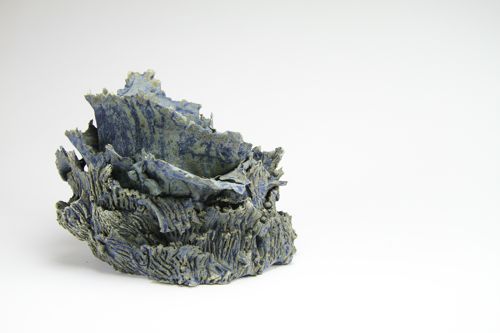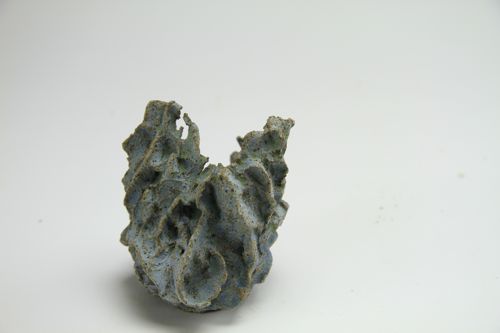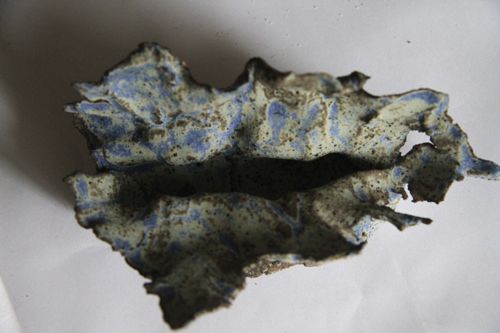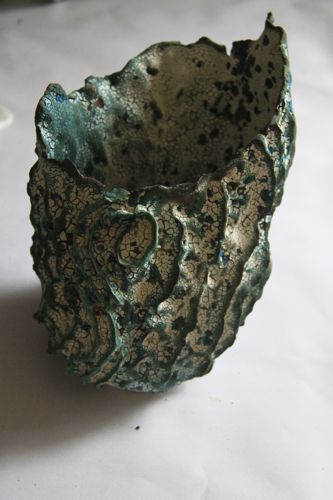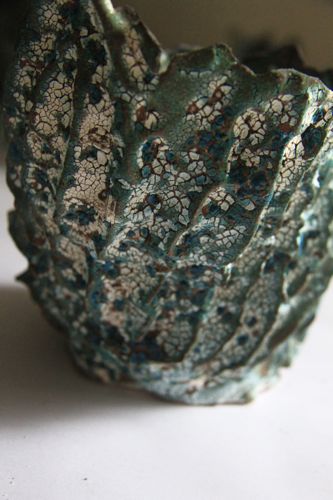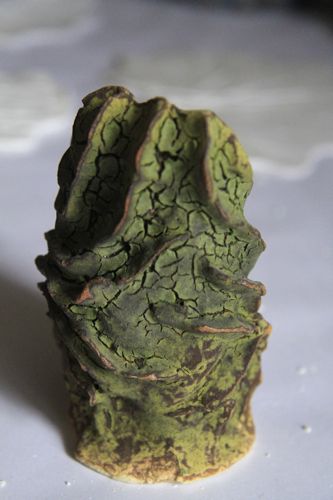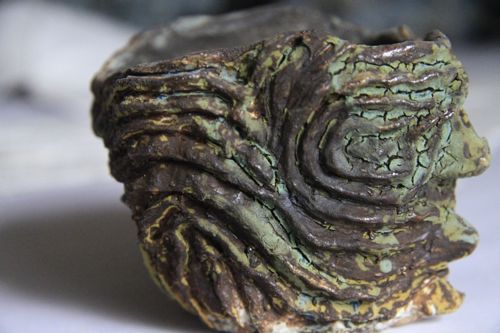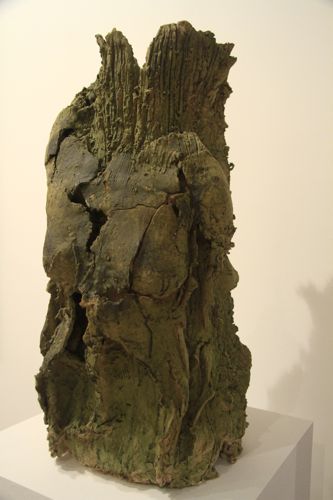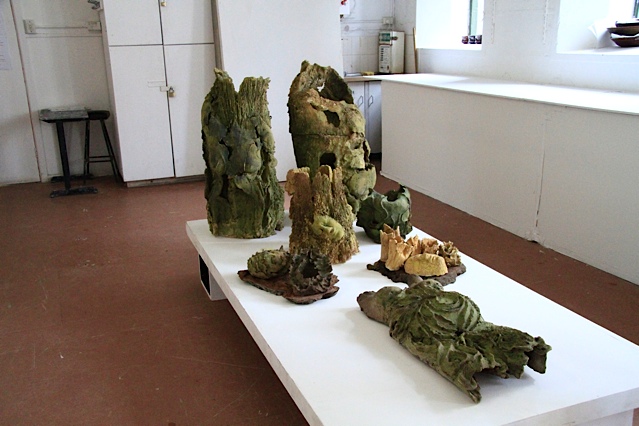Studio Inspirations
My direct influence of nature has stemmed from my surroundings, I moved around a lot throughout my life, but one thing has remained constant, I have always lived close to the ocean/ and or national parks. And Family holidays were always spent in flourishing natural environments – deserted coastlines, in the country or camping in the wilderness. I have always had an understanding of how important nature is to humanity. The image of the moss-covered rocks is from Whale Beach In the Northern Beaches of Sydney, this area was my home for over 10 years. I have great admiration for the colours and textures of moss, both found on trees and rocks. I have attempted to replicate these colours and textures onto the surface of my work through the exploration of dry glazes. And have been pleasantly surprised with my results, however, to convey a true connection to nature, I was not satisfied with just an imitation of nature, So I have been working on incorporating living matter into my work, I started with the idea of growing moss on the exterior of my works but found a few problems with this concept. I discovered that this was a possibilty from a moss graffiti artist called Edina Tokodi, she paints words and images on street scapes using a unique formula that consists of a blended mixture of moss, beer, yoghurt and sugar. When this mixture is painted onto a surface it creates the perfect environment for spores to spread which moss will then grow from. So far I have not been completely successful in keeping this surface alive, though I continue my exploration of the idea.
Growth Exhibition
Moss graffiti is an interesting phenomenon that has only recently been practiced. It is graffiti in public places, however instead of spray paint, a special formula is used that attracts spores in the air, which allows the easy growth of moss. This statement is an environmental one, just as normal graffiti is. However, again it is an attempt to integrate natural materials into the urban lifestyle. It is not so much a defacement relating to anarchy. It is not socially destructive and it is a quiet protest against the abundant concrete of the city. It is almost a mimic of plants that squeeze through the cracks of old buildings and footpaths. Just as Andy Goldsworthy manipulates natural materials, the moss graffitist attracts it. A blend of ingredients that seduce greenery to grow is in my opinion, a perfect way to adorn our streets.
Influence
My Main Influence for concept is Andy Goldsworthy, well recognized for his work with the earth, limiting most of his practice to site-specific work, using predominantly natural sources for material. I would like my own art practice to reflect this approach, though I do use some non natural materials, I do however work with plant life as an approach to the surface of my work. It has thus far been a struggle to obtain life on a foreign surface, but I will continue to make this idea work. I am aware it will take patience and perseverance. Goldsworthy works with natural materials, and he has come to see many complications with this method. But I believe, this makes it all the more extraordinary when it does eventually work.
“ I have become aware of how nature is in a state of change and how that change is the key to understanding. I want my art to be sensitive and alert to changes in material, season and weather…Each work concentrates on a particular aspect of material and place.”[1]
In limiting himself to the use of natural materials in art, we see a connection to the natural environment itself, this idea resonates with ‘creation’ in its most native form, reflecting on the art of ancient civilizations, such as the Mayans, in their stone and wood carvings. Furthermore, through the use of natural sourced materials, Goldsworthy displays his own connection to the earth, which for him had been a long and powerful relationship from an early age. It is In the wood that Andy Goldsworthy made his first outdoor sculptures.
“ In among the trees, you can imagine yourself to be ‘miles away from anywhere’[2]. This phrase implies a curiously anthropocentric sense that a place does not exist unless there are people in it.
He is perceptive to the natural world, and throughout his art practice his relationship to the environment has continued to strengthen. Here we see that the most prominent theme throughout his career conveys that the relationship of people with the natural world is of central concern to Andy Goldsworthy.
To incorporate life into my work I made spaces within my forms to grow plants, though I ended up not installing the plant-life into my works until after my graduation exhibition because I believed it could take the attention away from the form of the work itself.
Throughout my investigation into the art making practice of Goldsworthy and Tokodi, I have gained a clear understanding of the importance of using natural sources for material. I am now responsive to this as a direction I would like to take with my own work. My main influences stem from nature, and artists who regard their work the same way. I am aware that Franks, Goldsworthy and Tokodi all practice their work in very different ways, but they all hold true to the main message, which is that ‘we’ as humans need to be more aware of the significance of our connection to the natural world. This is something I strongly support, and would also like to convey through my art practice.
[1] Andy Goldsworthy, Andy Goldsworthy (Published by Viking (Penguin Group) 1990 )
[2] Andy Goldsworthy, Hand to Earth Andy Goldsworthy Sculpture 1976-1990, (published by W.S Maney & Son Ltd in association with The Henry Moore Centre for the Study of Sculpture 1991.)
